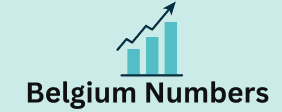Business models are difficult to replicate, especially when they achieve a certain degree of success in a specific market, since individuals are already familiar with the services or goods offered and are less willing to consider a possible change, unless it involves a variable of particular impact for them. In this case, crowdfunding can help pave the way for new products or services that are still untapped.
There are thousands of cases, and currently, many more in the mobile applications market, in which the market leader is not the best application , in terms of service or security, let’s look at the case of WhatsApp , but nevertheless, it dominates the instant messaging market overwhelmingly, despite the fact that there are competitors with better services or greater functionalities, see the examples of Telegram, WeChat or Line.
Modifying a business model applied model that is working well
or that isn’t working, is really complex, as I mentioned, because there is reluctance on the part of clients, suppliers, funding sources, the difficulty of finding partners who believe in a new morocco phone number library project… Many applications insert advertising to try to be profitable or use the freemium system , using the strategy of skimming the audience they are targeting.
I’d like to focus on the case of mobile 6 effective and easy ways to collect emails for email marketing applications , such as Amovens, the car-sharing and rental application, an option that may seem curious, but let’s delve a little deeper into the business model they have used.
We have to go back to 2010
with the arrival of Blablacar in Spain, the French application that was sweeping France and half of Europe, helping mobility and facilitating the use of transport , democratizing it, it seemed that book your list it had arrived to revolutionize the collaborative economy.
Today, Blablacar has more than 5 million registered users in Spain. It is the leading app for sharing rides and expenses with drivers, thanks to an intuitive application and the trust placed in drivers through its rating system at the end of the trip. This system allows drivers to describe their driving style and how the trip went, including punctuality, friendliness, flexibility, rear seat space, trunk use, and more.
